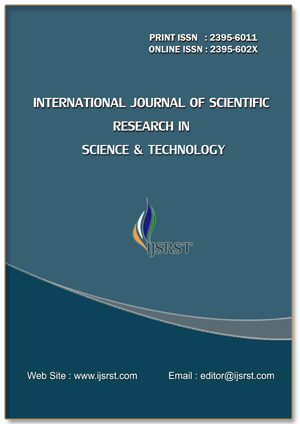An Elaborative Review on Analytical (HPLC) Method Development and Quality by Design (Qbd) Approach
DOI:
https://doi.org/10.32628/IJSRSTKeywords:
RP-HPLC, method developement, Quality by Design (QbD)Abstract
Analytical method development is important in pharmaceutical industry as it ensures that the analytical assays used are accurate, precise, and reliable. It helps ensure that the safest compounds are used in drug development. Analytical method validation is required before a drug can be used for clinical trials. The current review details the need of departure from the pharmaceutical industry's Quality by Testing (QbT) prototype approach for quantifying chemical compounds to the Quality by Design (QbD) approach. QbD can be recommended strategy for analytical method development because it can, Improve method robustness which can help create more robust, reliable, and efficient analytical methods. This can lead to higher quality products and better patient safety. The QbD approach can help reduce the risk of method failure and out-of-specification (OOS) results. Also improve regulatory compliance.The QbD approach can help demonstrate a thorough understanding of methods and processes in pharmaceutical development.
📊 Article Downloads
References
Ahuja S, Scypinski S. Modern Pharmaceutical Analysis: An Overview. Handbook Of Modern Pharmaceutical Analysis. Academic Press; 2001:243.
Patil, M.P.N., 2017. HPLC Method Development–A Review. Journal Of pharmaceutical Researchandeducation,1(2),Pp.243-260.
Zotou,A.,2012.Anoverviewofrecentadvancesinhplcinstrumentation. Central European Journal Of Chemistry, 10(3), Pp.554-569.
Snyder LR, Kirkland J, Glajch J. Practical HPLC Method Development,2nded, New York:John Wiley & Sonsinc; 1997.
Chan, C.C., 2011.Principles and practices of analytical method validation: Validation of Analytical Methods Is Time‐Consuming but Essential. The quality assurance Journal, 14(3-4), Pp.61-64.
Guideline, I.H.T., 2005. Validation of analytical Procedures: Textandmethodology.Q2 (R1),1(20), P.05.
Garg LK, Sait SS, Krishnamurthy T, Kumar CHRP. Quality by Design (Qbd): A Practical Experimental Design Approach by Blocking and Varying Certain Factors Of A Stability-Indicating HPLC Method For Simultaneous Determination Of Omeprazole And Ketoprofen. Journal of Liquid Chromatography & Related Technologies. 2015; 38(6):677-86.
Vogt FG, Kord AS. Development of Quality-By-Design Analytical Methods. Journal of Pharmaceutical Sciences. 2011; 100(3):797-812.
Bergum Dklaj. Application of Quality by Design (Qbd) To The Development And Validation Of Analytical Methods. In: Riley CM, Rosanske TW, Riley SRR, Editors. Specification Of Drug Substances And Products: Development And Validation Of Analytical Methods. 3: Newnes; 2013. P. 29-73.
Peraman R, Bhadraya K, Padmanabha Reddy Y. Analytical Quality by Design: A Tool for Regulatory Flexibility and Robust Analytics. International Journal Of Analytical Chemistry. 2015; 2015:9.
Izraelevitz AM, Anderson-Cook CM, Hamada MS. Illustrating The Use Of Statistical Experimental Design And Analysis For Multiresponse Prediction And Optimization. Quality Engineering. 2011; 23(3):265-77.
Guidance For Industry, “Q8 (R2) Pharmaceutical Development” (Nov 2009) Http://Www.Fda.Gov/Downloads/Drugs/Guidancecomplianceregulatoryinformation/Guidances/Ucm073507.Pdf. 2009.
Hanrahan G, Montes R, Gomez FA. Chemometric Experimental Design Based Optimization Techniques In Capillary Electrophoresis: A Critical Review Of Modern Applications. Analytical and Bioanalytical Chemistry. 2008;390(1):169-79.
Khuri AI, Mukhopadhyay S. Response Surface Methodology. Wiley Interdisciplinary Reviews: Computational Statistics. 2010; 2(2):128-49.
Parr MK, Schmidt AH. Life Cycle Management of Analytical Methods. Journal Of Pharmaceutical And Biomedical Analysis. 2018; 147(Supplement C):506-17.
Rozet E, Lebrun P, Michiels J-F, Sondag P, Scherder T, Boulanger B. Analytical Procedure Validation And The Quality By Design Paradigm. Journal Of Biopharmaceutical Statistics. 2015;25(2):260-8.
Rozet E, Lebrun P, Hubert P, Debrus B, Boulanger B. Design Spaces For Analytical Methods. Trac Trends In Analytical Chemistry. 2013;42(Supplement C):157-67.
Vera Candioti L, De Zan MM, Cámara MS, Goicoechea HC. Experimental Design And Multiple Response Optimization. Using the Desirability Function In Analytical Methods Development. Talanta. 2014; 124(Supplement C):123-38.
Ganorkar SB, Shirkhedkar AA. Design of Experiments In Liquid Chromatography (HPLC) Analysis Of Pharmaceuticals: Analytics, Applications, Implications And Future Prospects. Reviews in Analytical Chemistry. 2017; 36(3)..
Draper NR, Smith H. Applied Regression Analysis: Wiley; 2014.
Downloads
Published
Issue
Section
License
Copyright (c) 2024 International Journal of Scientific Research in Science and Technology

This work is licensed under a Creative Commons Attribution 4.0 International License.
https://creativecommons.org/licenses/by/4.0




